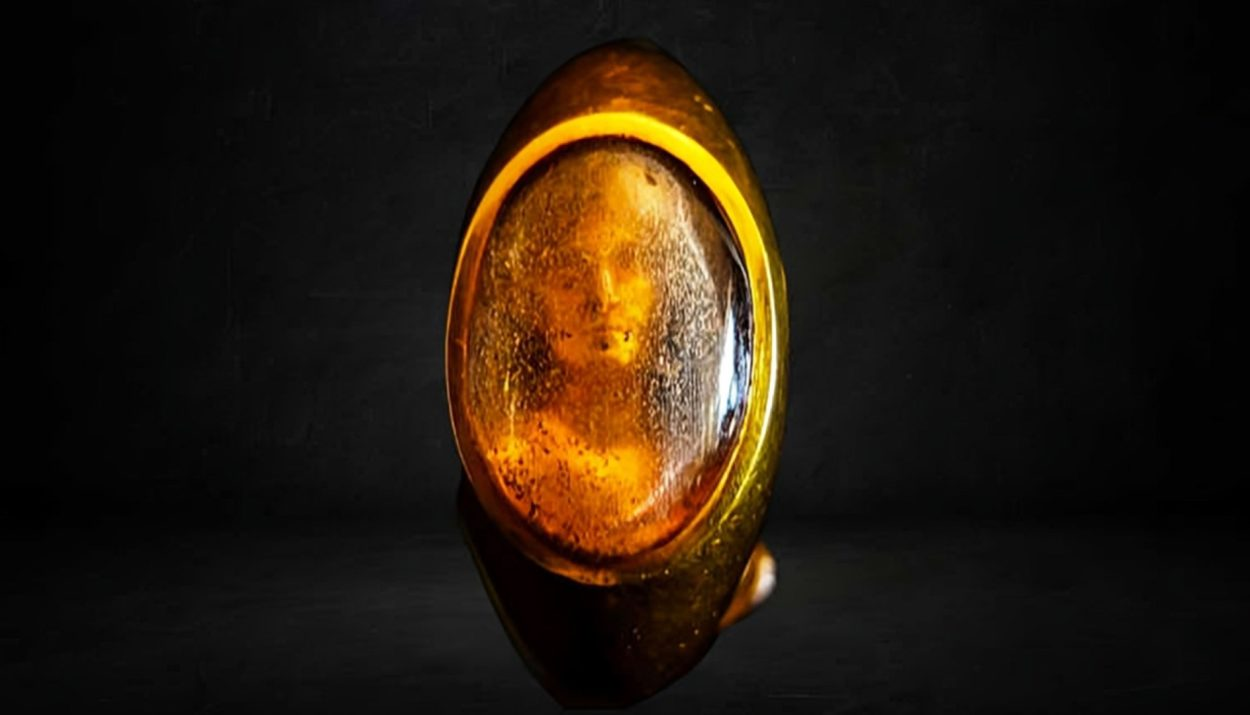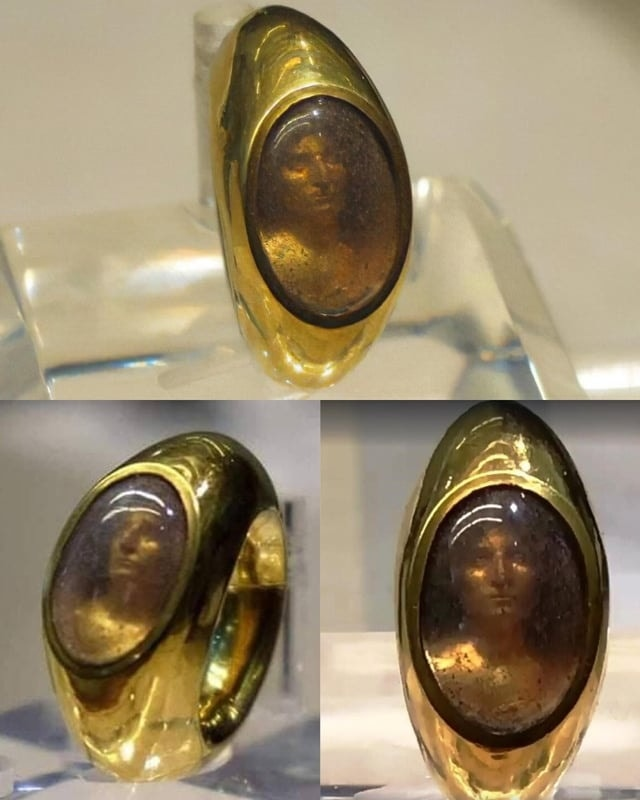Archaeologists have recently unearthed an extraordinary piece of ancient jewelry: a 1900-year-old gold ring featuring a holographic image. This remarkable artifact was discovered in the tomb of Aebutia Quarta, a Roman noblewoman, at the Grottaferrata necropolis near Rome. The tomb, now famously known as the Hypogeum of the Garland, was discovered in 2000 and has since provided valuable insights into ancient Roman funerary practices and artistic achievements.
The Hypogeum of the Garland
The Hypogeum of the Garland is an underground chapel that housed the remains of Aebutia Quarta and her son, Titus Carvilius Gemello. The tomb contained two marble sarcophagi inscribed with their names and adorned with floral garlands, hence the name. The state of preservation of the bodies, particularly that of Gemello, left archaeologists astonished. Known as the "Mummy of Rome," Gemello's body was wrapped in a shroud and covered with flowers, indicating a high level of care and reverence in his burial.
The Holographic Ring
The centerpiece of this discovery is a gold ring worn by Aebutia Quarta. This exquisite piece of jewelry features a cabochon of rock crystal with a finely executed bust of her deceased son carved on the back of the stone. This method creates a lifelike 3D illusion, giving the appearance of a hologram when viewed through the crystal lens. Unlike traditional cameos, which are typically carved on the outer face of the stone, this unique technique adds depth and a luminous effect to the image, making it a masterpiece of ancient craftsmanship.
Artistic and Cultural Significance
The ring is not only a testament to the advanced artistic techniques of ancient Rome but also sheds light on the cultural practices surrounding grief and memory. The lifelike depiction of Gemello on the ring suggests that it was created as a token of mourning and remembrance by Aebutia Quarta. The holographic image serves as a poignant reminder of her beloved son, who died at the young age of 18.
The Mystery of Gemello's Death
The cause of Titus Carvilius Gemello's death remains a subject of intrigue. His body showed signs of a fractured femur and high levels of arsenic, leading to speculations that he might have died from septicemia or poisoning. The embalming process and the presence of floral garlands indicate the high status of the deceased and the elaborate funerary rituals practiced by the Romans.
Current Exhibition
The gold ring with its holographic image is currently displayed at the Museo Archeologica Nazionale di Palestrina in Italy. This artifact not only highlights the unparalleled artistry of ancient Rome but also provides a tangible connection to the personal and emotional aspects of Roman life and death.
The discovery of Aebutia Quarta's holographic ring is a significant archaeological find that enriches our understanding of ancient Roman culture. It exemplifies the sophisticated techniques employed by Roman artisans and offers a glimpse into the intimate aspects of their society. As this artifact continues to be studied and admired, it stands as a lasting symbol of love, grief, and the remarkable achievements of ancient Rome.









